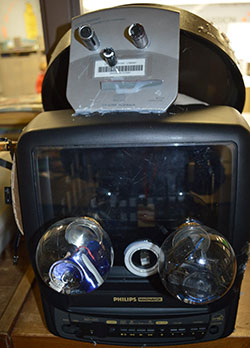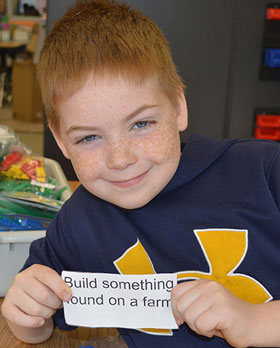The words a mother painted in big letters on the Lee Elementary makerspace room’s wall told the story of the room best. “Passion. Discover. Dream. Inspire. Imagine. Explore.”
That’s what went on this school year in the makerspace room that got second- and third-graders STEAMed up about learning. STEAM stands for a learning approach that uses science, technology, engineering, the arts and mathematics. To accomplish that, students tore apart computers, Skyped with students in Switzerland, built video games, made videos and did 3-D printing.

“The end result is students who take thought-risks, engage in experiential learning, persist in problem-solving, embrace collaboration and work through the creative process,” said Angie Jefferson, Lee Elementary principal.
Makerspace is a hit with students, teachers and parents, and “very different in good way,” said Nathan Fischer, a second-grade teacher who described the room’s buzz as “like a busy Apple store.”
Stations in the room were designed around STEAM objectives, featuring hands-on activities for learning in what Jefferson believes is the largest makerspace room in the state. Here’s a look inside it.
Let’s Pay a Visit
At the Lego station are plastic bags of specific colors and types of Legos with a piece of paper inside. On the slip of paper is a word or words instructing students what to build with the Legos in the bag. Some tasks are creative, like building a farm or animal. Others are more difficult, like building “something to do with math that is one-third orange and two-thirds blue.”
“I like everything,” says student Jaxon Wieringa, who was building a farm. “It’s just perfect. We’re learning new stuff every day. We’re learning how phones work. I’d love this space as a house.”
Makerspaces are meant to allow students to create and learn and explore without a lot of boundaries or direction, Jefferson said. “Some kids are not successful with the more traditional approach.”
The creation of the space is extra special to Jefferson because 100 percent of its cost was paid for through donations from parents, teachers, grants and the Middleville Community. “That was a total must,” Jefferson said of the funding, because with tight budgets, nothing was left over to create such a room.

More than 30 grants were applied for; parents donated everything from furniture to tools to garage sale proceeds; items were pulled out of storage; art supplies were donated and a GoFundMe account was created.
The noisy room is full of students so intent on their work they don’t even notice visitors who enter the room. The students are very well-behaved, asking for permission to use tools like the paper-cutter and hot-glue gun. They don’t run around, they put things away and they clean up the room when it’s time to go. They also say “Look! Look! Mr. Fischer” a lot.
“They love telling and showing what they did,” Fischer said.
Colten Thornton calls the makerspace room “the best room in the school,” and is proud of a piece of art he created using pieces from the “destruction station,” where electronic items are torn apart. He turned a portable TV into something that looks like a robot face with big light bulbs for eyes.
‘We’re learning new stuff every day. I’d love this space as a house.’ — Jaxon Wieringa, student
Lots of other schools have come to check out the school’s makerspace, and they’ve left amazed and inspired, Jefferson said.
“Parents who come to the district, they’re pretty impressed,” she said, adding she thinks it may be one of the most sophisticated makerspaces in the country. “They’ve never seen anything like it.”

Tool Kits Aplenty
Makerspace offers a type of learning that allows students to make mistakes, redo and take ownership of their learning. Teachers sign up on a calendar to visit the room or borrow items from it that they use to tie into their curriculum.
“It’s an extension to my classroom as I see it,” Fischer said. “Whatever I am doing in my classroom, I can take here.”
Mom LeAnn Pratt thinks the room is terrific: “It’s such a great resource for these kids to learn outside of the classroom,” she said during a visit to the room. “While ‘I’m in here and see what they’re doing, I’m so surprised how fast they pick up on it.”
Makerspaces have become a trend at many schools, and an industry of educational kits has grown up around them. The rooms order products like Bloxels (a way for students to tell stories through video game creation), Spheros (little robots that teach coding), and littleBits (a way to make electronic circuits that can control toy cars and create inventions).
“The kids just get in and figure it out,” Jefferson said. “That’s the idea around makerspace.”
It will continue to need funding, though, she noted. “These supplies will get used up.”
CONNECT
Student Promotional Video for Makerspace Project









